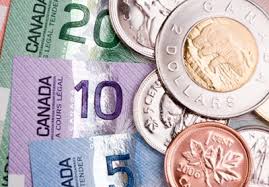Thursday, 12 March 2015 20:45
 TORONTO: The Canadian dollar recouped all of the previous session’s losses against its US counterpart on Thursday as the greenback retreated on data that showed US retail sales fell unexpectedly in February, the third straight month of declines.
TORONTO: The Canadian dollar recouped all of the previous session’s losses against its US counterpart on Thursday as the greenback retreated on data that showed US retail sales fell unexpectedly in February, the third straight month of declines.
The drop in sales was fairly broad-based, suggesting poor winter weather kept shoppers away, and could hurt economic growth in the first quarter.
The US dollar index, which measures the greenback against six major currencies, touched its highest level in nearly 12 years overnight on anticipation the US Federal Reserve will hike interest rates sometime in the coming months, but it softened ahead of the retail sales data.
“(The US dollar has) gained a lot of momentum in the last couple of weeks. We’ve taken a little bit of a breather from that,” said Mark Chandler, head of Canadian fixed income and currency strategy at RBC Capital Markets. He added, however, that the Canadian dollar was among the currencies benefiting the least from Thursday’s US dollar weakness.
“It’s one of the reasons why we also didn’t get hurt as much even though it looked bad from a Canada perspective. We’re the ones that are in a position to benefit the most from our proximity to the US and the improving US economy.”
The Canadian dollar CAD=D4 was trading at C$ 1.2653 against the US dollar, or 79.03 US cents at 9:13 a.m. (1413 GMT), more than a cent stronger than Wednesday’s finish at C$ 1.2761, or 78.36 US cents.
Domestically, investors were also taking stock of comments from the Bank of Canada as well as a slew of lower-tier economic data.
A central bank economist said on Thursday the bank was seeing more signs of demand for nonenergy exports and business investment, helped by the weaker Canadian dollar, factors that are crucial for a return to sustainable growth.
Canada’s household debt-to-income ratio rose to a record high in the final quarter of 2014, hitting 163.3 percent, while Canadian home prices rose in February from a month and a year earlier.
New home prices slipped in January, however, the first national decline since July 2010.
Canadian government bond prices were higher across the maturity curve, with the two-year up 3 Canadian cents to yield 0.566 percent and the benchmark 10-year rising 37 Canadian cents to yield 1.465 percent.
Copyright Reuters, 2015




























